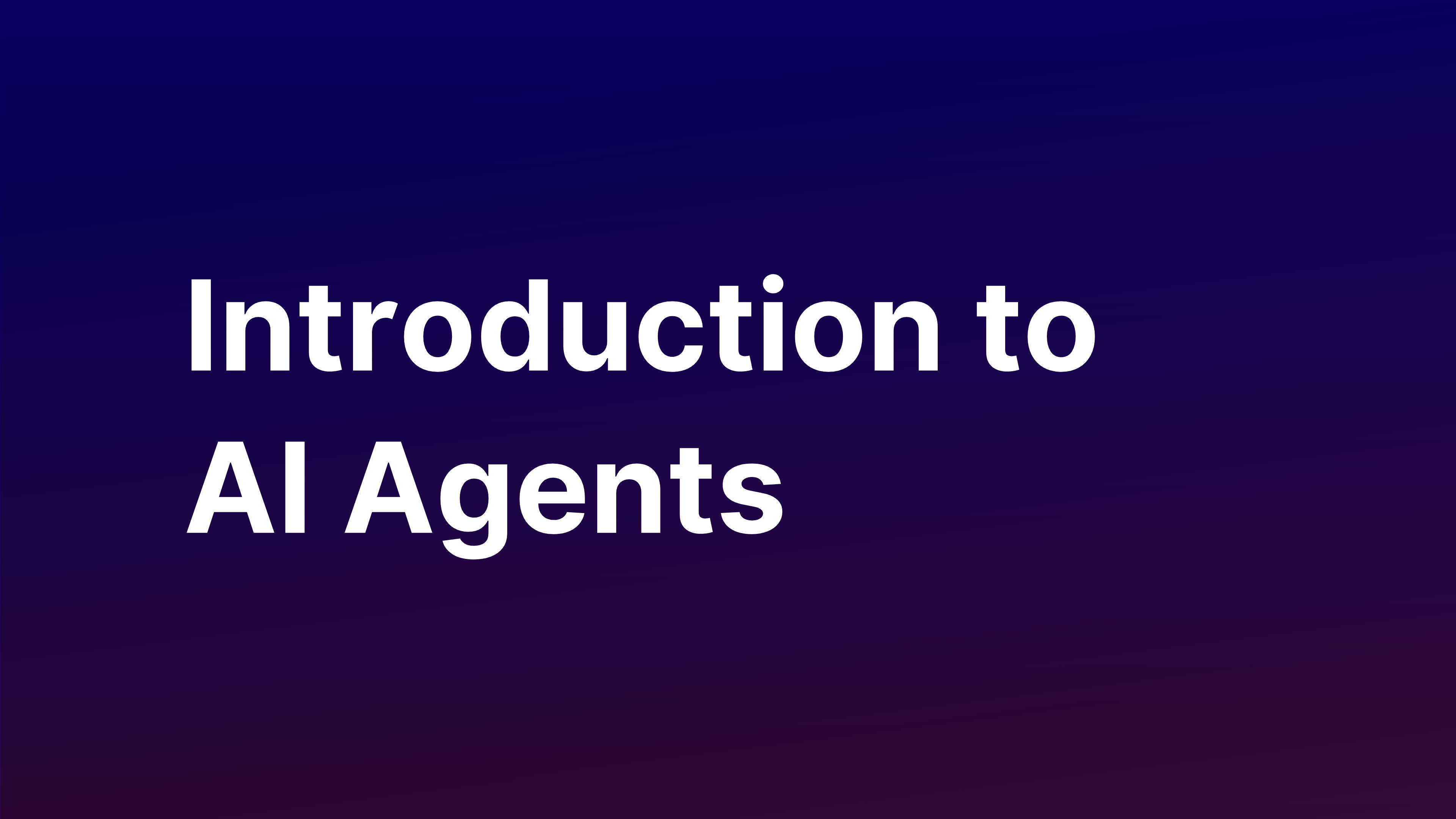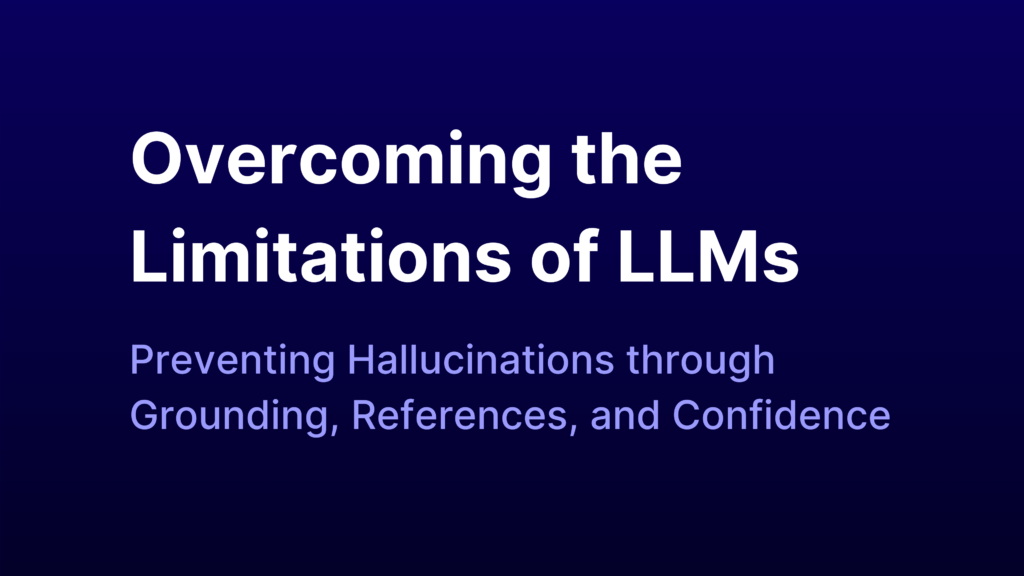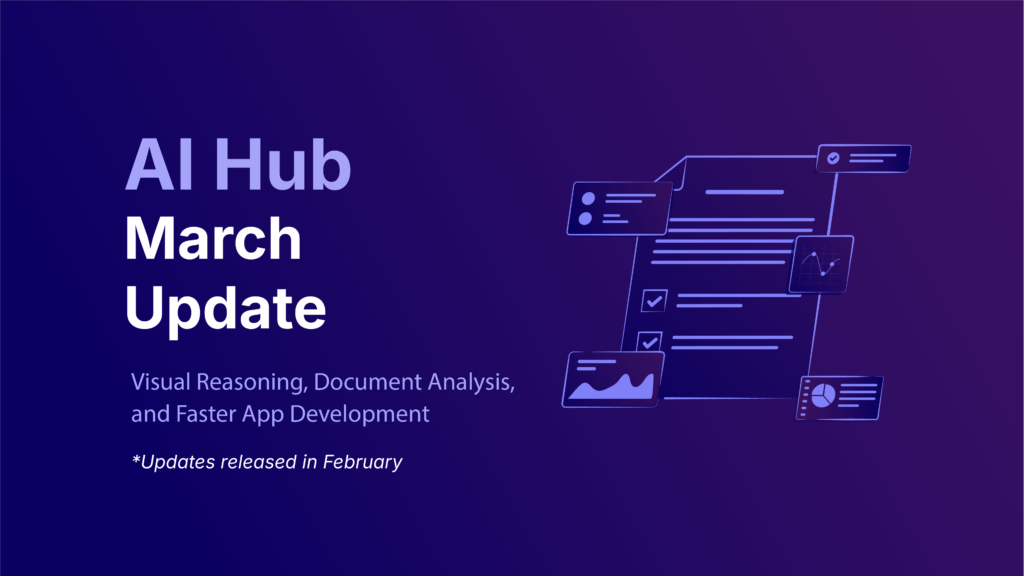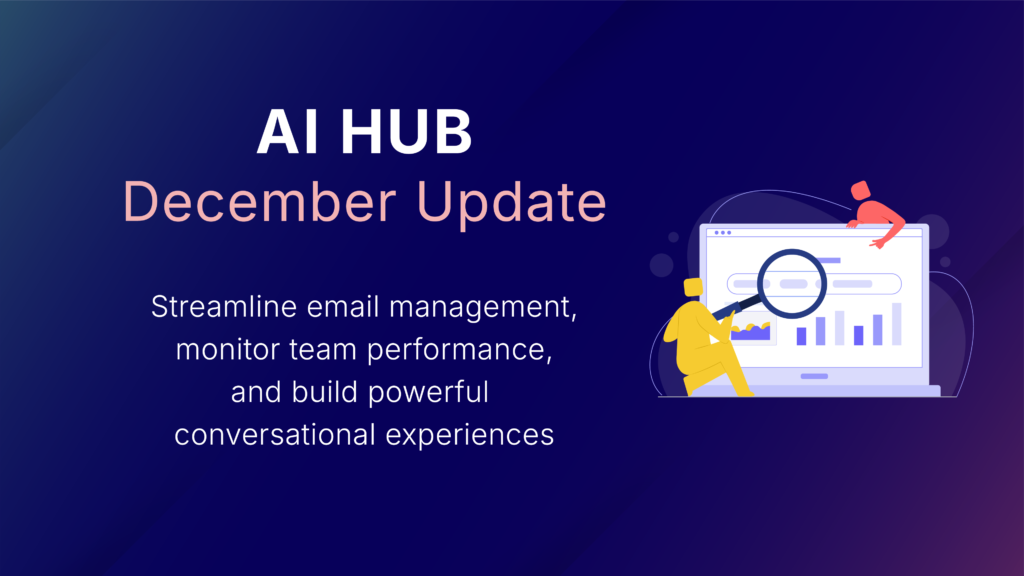Chances are, you’ve used an LLM to improve your writing or answer questions. But what about use cases that go beyond simply fetching data? What is it, exactly, that lets us file an insurance claim via chatbot or identify patterns in customer support cases? The answer is AI-powered minions known as “agents.” They carry out tedious and/or repetitive tasks so we humans can focus on higher-value work.
Agents are the heart of AI Hub. Yet with so much recent attention and inconsistent usage, it’s easy to get confused. So it’s worth taking a moment to share how they work, what you can do with them in AI Hub, and where we see agents going over the next few years.
What are AI agents?
Just two years ago, workflow automation required humans to spell out every step, every parameter, every if/then scenario – and do so in code. Now, AI agents have flipped the script. They figure out the steps and conditionals on their own, and you instruct them using plain English.
At a high level, AI agents are a souped-up evolution of the “bots” we’ve become familiar with. (Indeed, some of today’s chatbots now have AI agents running in the background.) On a technical level, they are essentially LLMs, but with the added capability to understand their environment, make decisions, and use tools to achieve their goals. They plan their work, respond to new information, and operate with varying degrees of autonomy.
The upshot is that they can take on tasks that are far more complex than what a bot could handle. Whereas an AI assistant reacts to explicit prompts and AI workflows mindlessly plow through a set of instructions, a true AI agent is dynamic and can puzzle out the steps on its own.
For customers of AI Hub, agents provide an additional benefit: they don’t require pre-processed inputs. Yes, that sounds boring on the surface. But it actually makes a massive difference. Let’s look at an example.
In the past, if you used automation to determine eligibility for a loan, you would first have to extract the applicant’s income, debt load, date of birth, etc. from a variety of documents and put them into a standard format. I.e., manual data entry. Only then, with all the key/value pairs mapped and dumped into a .csv, could you feed it into your automated workflow.
But with AI Hub’s agents, you simply feed in the applicant’s bank statements and other records as-is. They might be PDFs, .jpgs, or even Word docs. The agent harvests the data it needs as it performs the analysis, just like a human underwriter would.
By adding the ability to work with unstructured data on top of the advanced reasoning capabilities inherent in all agents, AI Hub unlocks a wide range of possibilities for organizations across finance, insurance, manufacturing, government services, logistics, and more. An investment analyst can use an agent to comb through hundreds of annual reports, analyzing not just the numbers but also the prose to sniff out “hidden gem” opportunities. A factory owner can have an agent analyze hand-written incident reports to identify patterns and improve safety. And an importer can cross-check invoices against shipping manifests in seconds.
How agents work within AI Hub
If you’ve used ChatGPT or Google’s AI-assisted search, then you’re familiar with basic queries. You ask a question, and the LLM answers it for you. This is a case of AI assistants using single-shot queries to return data. They don’t manipulate it or make computations with it. Nor do they interpret the data or use it to inform further action. Agents, on the other hand, can do those things using a more sophisticated methodology.
The true value of agents isn’t in fetching information. It’s in solving problems. Agents go beyond simple LLM prompts by breaking tasks into smaller steps, invoking tools, and connecting with systems to get more complex jobs done. And they use reasoning along the way to ensure high-quality results.
Let’s go back to the example of determining eligibility for a loan. When creating the agent, you specify parameters such as acceptable credit scores and debt-to-income ratios. You also articulate the task: in this case, “based on the applicant’s financial data, determine whether they qualify for a loan.” Then, when the agent runs, it finds the applicant’s credit score amongst all the records you’ve supplied and calls into an LLM to compare it to your parameters, then holds the result in memory. Next, it pulls the applicant’s income and debt numbers into memory, then uses the calculator tool supplied by AI Hub to compute the ratio. And so on.
At every step, the agent asks “Did I solve the problem? Do I need more information? Does this seem like the right information?” This is a level of reasoning that just doesn’t exist in LLMs like ChatGPT or Claude. With agents, the answers aren’t fetched – they’re compiled.
Instabase’s vision for agents today, tomorrow, and beyond
As of today, AI Hub agents can take on a vast array of tasks using the multi-step reasoning methodology described above. And thanks to our no-code creation approach, AI agents are available to a vast array of job roles. Anyone from an IT admin to an administrative assistant already has the skills needed to create agents that make them more efficient and effective.
But we’re not stopping there.
A typical business now uses 342 SaaS apps, with enterprise-scale companies using nearly 500 on average. We understand how important it is for these systems to work in harmony. That’s why our product team is currently building integrations with apps like Salesforce and Jira that will allow AI Hub agents to operate within other software products.
For instance, let’s say a new customer support ticket comes in. Rather than having a team member spend time on it right away, an agent looks for tickets reporting the same issue, as well as help docs and internal knowledge bases. If a resolution has been found, the agent will update the ticket with the relevant information and notify the customer. If no solution is available, the agent will escalate the ticket to a support engineer for follow-up.
On the horizon, we see a world where you can simply give the agent a desired outcome and let it do the rest–with the appropriate guardrails and levels of human oversight, of course. Continuing with the loan example, a lender will tell AI Hub to process the whole loan application. The agent will then take in the application and supporting documentation, but rather than stopping after the eligibility step, the agent won’t rest until the funds (assuming the loan is approved) are deposited in the applicant’s bank account.
This blog only scratches the surface in terms of what AI Hub’s agents can do for your organization. There are specific considerations for enterprise companies, as well as multi-agent approaches to discuss. Stay tuned for more on those topics, and be sure to subscribe to our newsletter.
In the meantime, sign up for a demo to learn more about how we use AI Agents to automate, analyze, and search unstructured data.



